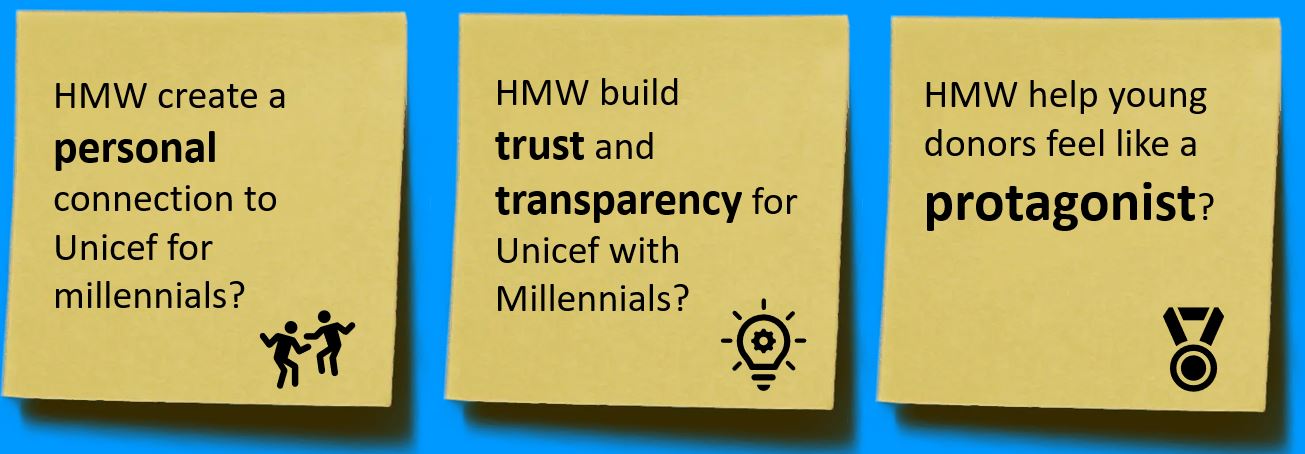The Challenge
Unicef is at a crossroads - as a cause they are extremely popular among the baby boomers. However, millenials are quickly becoming the largest donor population. This age group has some awareness of Unicef having perhaps participating in initiatives in elementary school but have since not engaged with the organization. Unicef challenged our team to reimage how might they engage grown millenials to build a new, younger base of donors.
Mindful Product Management
As a team of millneials, we spent our first discussion telling stories of the last time we donated money to any cause. This exercise helped us to identify a few common themes - the motivation behind donating, donation "funnels", trust and impact. Before jumping into reframing the prompt, we interviewed a few other friends and acquiantances (we need this to be quick as it was a 6-week project!). Finally, during our synthesis we built a rough standard journey map for donors (to any cause, not just Unicef). We determined that two key overarching themes among millenials donation habits and trust (is this a "real" charity?) and impact (is my money just going to overhead?). Unicef is a huge organization - some perceive this as negative, but in reality, Unicef's mandate requires major oversight (trust) and its scale enables much more effective change (impact).
We came up with the following HMWs that we wanted to solve:

We wanted to focus on bring millenials in sustainably by focusing on their motivations.
Discovering Your Cause
Through solostorming and synthesis, we developed a re-imagine Donor Journey Map that guided our prototype creation:
Our digital solution to Unicef focused on first brining in millenial donors, then equipping them to engage their networks and communities. Once they are effectively engaged, we want to empower them to be a global advocate for Unicef.
The first part of our solution was to help millenials "discover their cause" - using smart digital marketing and a prototypes interactive "child" chatbot on the website to improve the donor funnel. By targeting millenials with specific causes and individuals, we are focusing on the actionable, real impact.
Next, our solution focused on building Unicef's web presence into a social platform - donors would have a user dashboard and, from there, would be able to check out new causes and their media. This would enable seamless sharing activity to Facebook, Twitter & Instagram.
Finally, we emphasized the need to empower millenials outside the Unicef platform - pushing active donors to "own their cause". We want millenials to engage their local community through events, education, and activism. If Unicef could engage millenials beyond donation, we found, these donors were much more likely to continue recurring donations
Takeaways
Non-profits face a huge challenge today, millenials are "woke" but have increased skepticism in the non-profit space, particularly those that are government or government-adjacent. It may seem obvious but making a personal connection with donors is incredibly important - just as it is with any other product. This is especially key for an organization with incredible scale.
On a personal level, I was really excited by this project as most of my work has been focused on B2B/C products. It was great to jump into a new space - I was surprised how well for-profit product concepts translate seamlessly to non-profits. When I think about my career - as a product manager, what do I want my north star to be, is it impactful on the world?